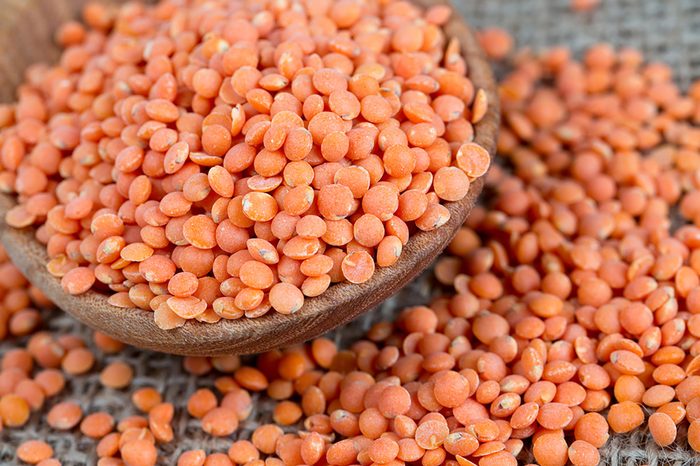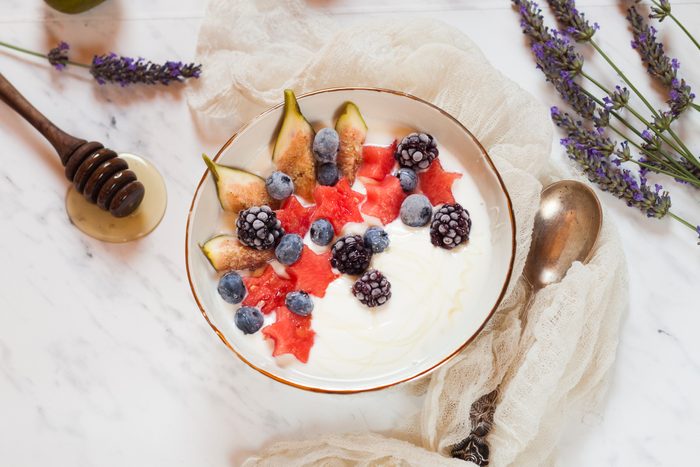
Add Greek yogurt
Step aside traditional American yogurt, and allow Greek yogurt to take the spotlight. As nutritionist Tracy Lesht, RD, says, “It’s rich in protein and so easy to eat as a snack or on the go. Just one serving of a Greek yogurt can add about 18 grams of protein into your day.” For an extra 4 grams of protein, top your yogurt with an ounce of nuts (about a handful).
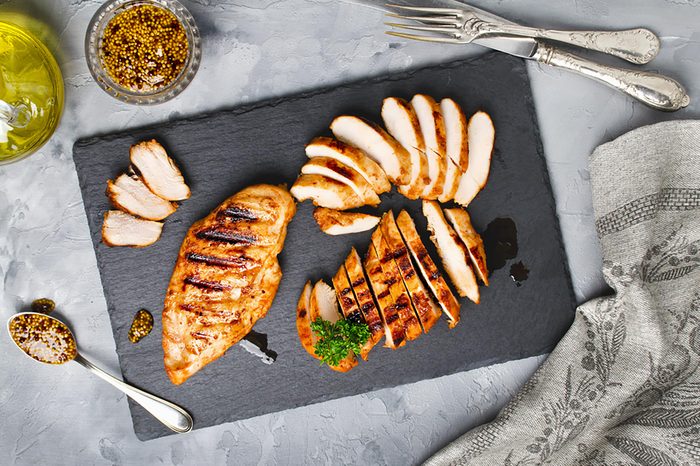
Prep meat strips
The best way to make sure you’re actually getting the protein you need? To keep that essential nutrient at top of mind, every single time you set your table. “Each meal should be based on protein, whereby you consume at least 20 to 30 grams of protein (depending on body size and protein type) every three hours or so,” Robert Wildman, PhD, chief protein officer for Premier Protein says. That’s roughly three ounces of meat, or about the size of a deck of cards. If you prep lunches for the workweek, add one small step into your routine to rack up even more grams of protein. “You can prepare and cook extra portions of a lean protein like chicken or fish and keep it stored in the refrigerator to add to meals throughout the week,” Lesh says. Try grilling or broiling to limit added fats. Consider it a healthier version of sprinkling salt (or Sriracha) on your meal.
Sustainable Meat: The Best and Worst Kinds, Ranked by Sustainability Experts
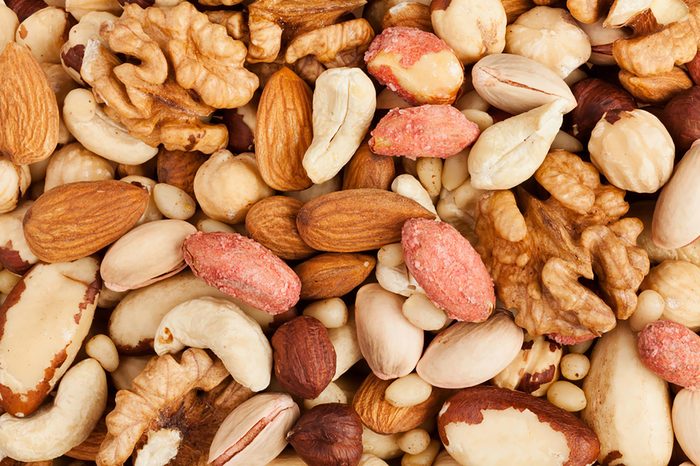
Keep nuts handy
If you’re wondering how to get more protein into your diet, nuts like almonds or walnuts are great to have around because they can be added to many different foods or eaten on their own as a snack. “In addition to sprinkling them on your yogurt, add nuts to your salad, breakfast cereal, oatmeal, and more,” Lesht says. “An easy tip is to keep a handful of almonds in a Ziploc bag to have on hand for when hunger strikes!” Just make sure to count out your servings so you don’t get into a high-calorie habit of handful after handful of nut varieties. And as with most healthy foods, naked nuts are better than those flavored or salted.
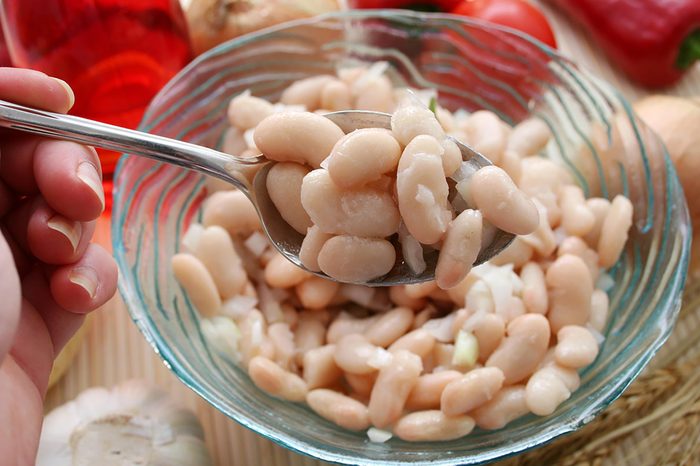
Add beans to anything
Your vegan friends are onto something when they rave about how much they love creating culinary concoctions out of good ol’ simple beans. “Add garbanzo beans, white beans, lentils, kidney beans, or black beans to meals like salads, soups, or pastas,” Lesht says. “Beans are full of fiber and average around 15 grams of protein per cup.”
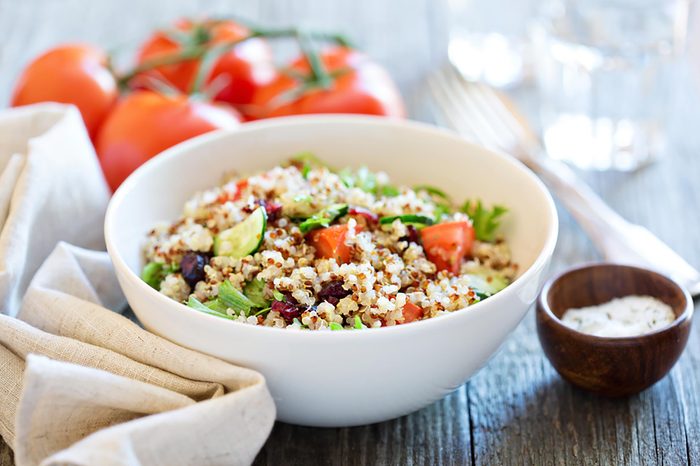
Choose quinoa over rice or pasta
“Quinoa is considered a complete protein because it contains all the essential amino acids we need. The seed (most people think it’s a grain) is packed with about 8 grams of protein per cup. Swap quinoa for rice or pasta, or, add it to soups, salads, or even muffins and pancakes for extra nutritional value,” Lesht recommends. Considering how many meals are better with a base, swapping your usual brown-rice habit for protein-packed quinoa will add a good chunk of protein to your diet.
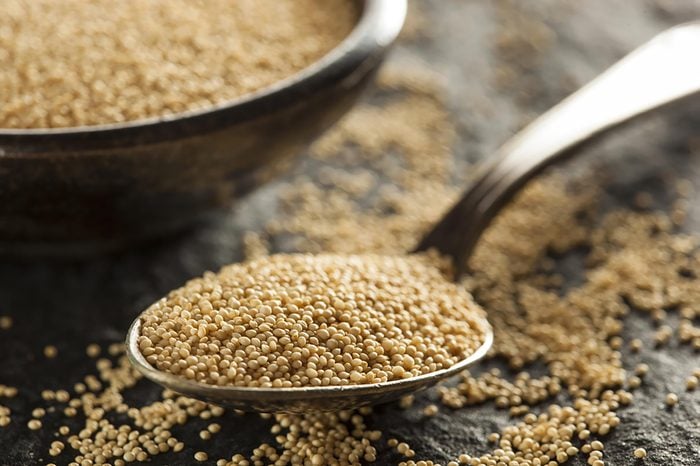
Try some ancient grains
For days when you’re not swapping quinoa for pasta, experiment with other ancient grains, such as teff, spelt, and amaranth, which are surprisingly packed with protein. Chewy spelt has over 5 grams of protein per half-cup, and nutty, buttery Kamut has more than 4.5 grams. Teff, which is slightly sweet, also has 4.5 grams of protein per half-cup, as does amaranth (technically a seed), which has a slightly earthy flavor. Sorghum, which is a bit bitter, comes in at 10 grams of protein per half-cup.
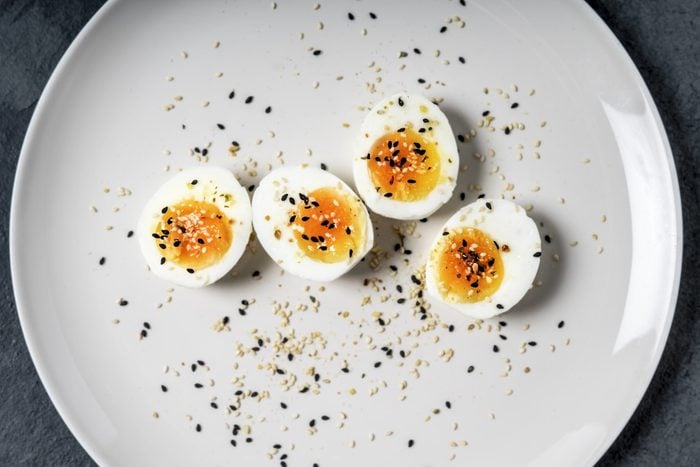
Eat hard-boiled eggs
Easter’s mascot isn’t just ideal for hunting in the backyard in your Sunday best; hard-boiled eggs (even if they aren’t dyed pastel colors) are a great addition to your diet. “Make a batch of hard-boiled eggs to eat throughout the week. Having the eggs already cooked will make it easy to grab for a snack or an easy protein to add on top of a salad or to a meal,” Lesht says. One hard-boiled egg can pack in 6 grams of protein. Eggs are also one of the best foods for brain health.
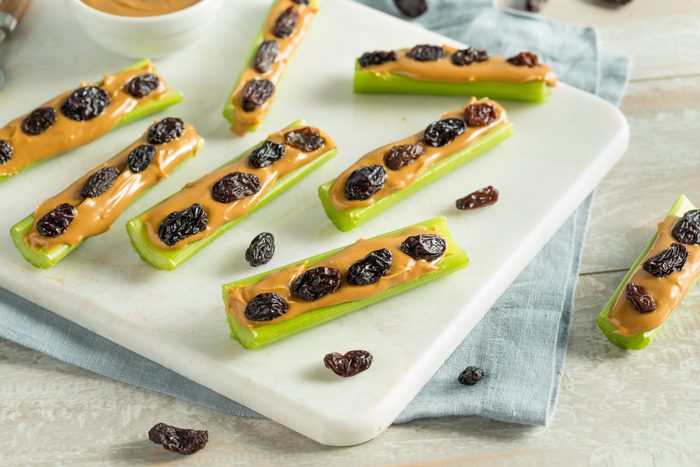
Go old school with snacks
Remember when you’d hop off the school bus and your mom would have some snacks waiting for you? You didn’t know it then, but those “ants on a log” were actually a way to keep you from munching on sweets before dinner time. “Snack on two tablespoons of natural peanut butter with a banana or celery sticks. A peanut butter snack can add 8 grams of protein to your day,” Lesht explains. If you still love the “ants” part, add no more than a tablespoon of raisins, as they’re pretty high in sugar. Can’t eat peanut butter? Try hummus.
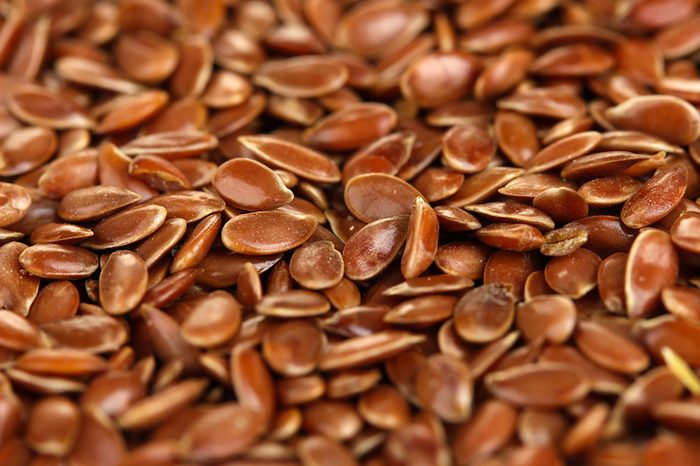
Mix in seeds
If getting your daily dose of nutrients is a top priority, this is how to get more protein: consider developing a seed habit. “Add seeds like hemp, chia, or flaxseed into smoothies, oatmeal, or yogurt,” Lesht says. Just two tablespoons of the seeds can add around 3.5 to 6 grams of protein to your food.
New Report: These Top 5 ‘Superfoods’ Are Causing Unexpected Side Effects
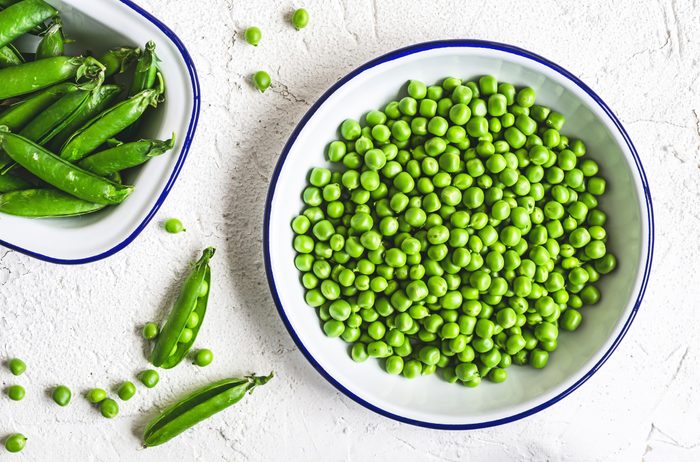
Give peas a chance
If you’ve ever visited London and searched for the best “fish and chips,” you probably noticed a side of “mushy peas” as an option. Just as they sound, the Brits prefer their peas mashed, but regardless of how you eat them, Lesht says they’re a good food choice. “Peas can easily be thrown into soups, salads, and main dishes. One cup of peas contains 8 grams of protein,” she notes. Some pea-lovers have been known to eat them frozen straight out of the freezer.
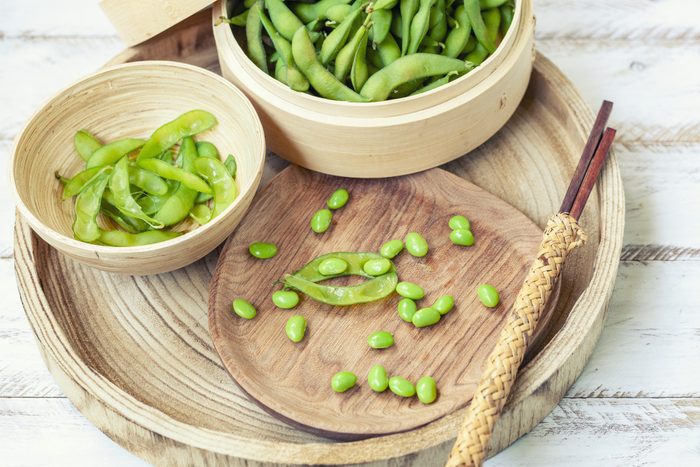
Try some edamame
Your go-to appetizer at your favorite sushi restaurant might be the reason you can only make it through two rolls before maxing out. “Munch on edamame for a low-calorie protein-packed snack,” says Sarah Mattison Berndt, RD. “One-half cup contains 9 grams of protein.” Edamame, or soybeans, also deliver 300 mg of heart-healthy, brain-boosting omega-3 fatty acids.
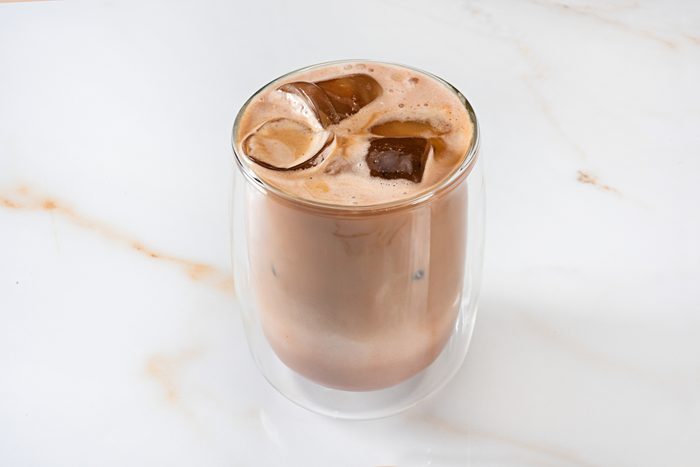
Try coffee-flavored protein
You don’t need us to remind you about the Sunday scaries or the Monday blues, but if you want a way to start off your week on the right foot, Berndt has an idea. “Mornings are always hectic, leaving me in need of a jump start. I turn to coffee-flavored protein, such as Maine Roast Protein Coffee, to gear up for a productive day. It not only boosts energy, but unlike traditional coffee, it sustains energy levels.”
14 High-Protein Breakfast Ideas That Will Help You Lose Weight
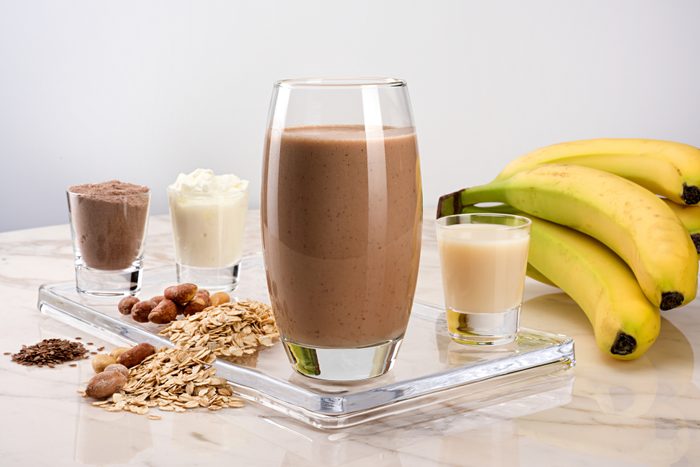
Fight sweets with healthy stuff
Yet another birthday at work with cupcakes? Or extra stress have you aching for some sweets? To fight the urge, Berndt has this trick: “When I’m craving sweets, I reach for a chocolate ‘milkshake’ made with chocolate whey protein blended with frozen almond milk cubes. It’s delicious, and the protein helps curb my craving for sweets.”
Craving Sugar? A Dietitian Says You May Need More of This Surprising Nutrient
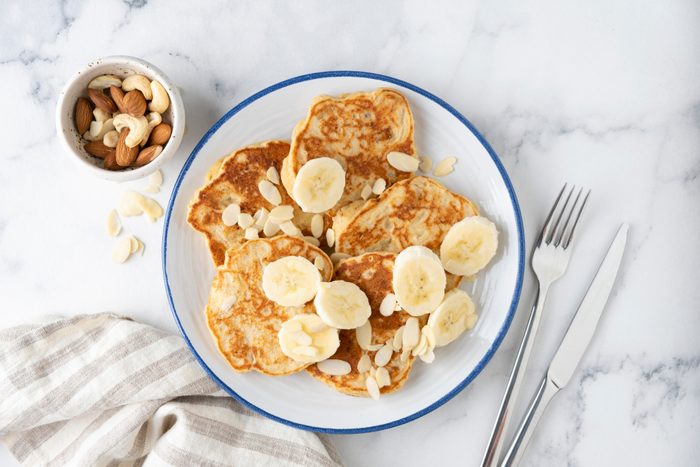
Make pancakes 2.0
“I love pancakes, but the traditional version is a carbohydrate catastrophe!” Berndt says. Instead, she makes a healthier version with oat flour, egg whites, and protein powder. “The protein keeps me satisfied and adds a fantastic flavor so I can enjoy my favorite breakfast guilt-free.”
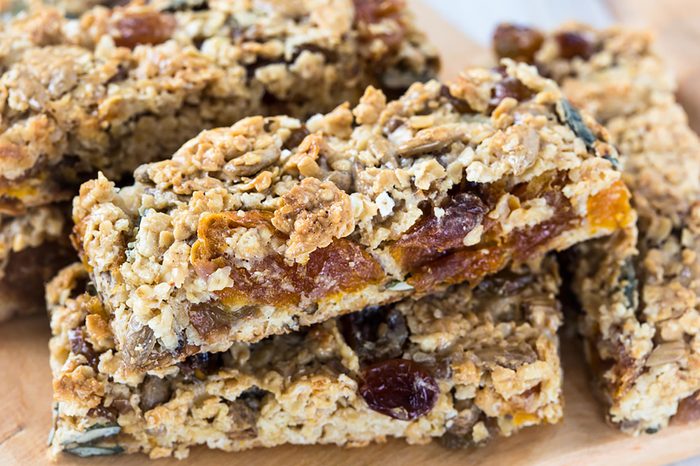
Have snack bars for travel
On the go, running late, running early or just um, running—and you find yourself hungry (or hangry!)? To solve the dilemma of drive-through or bust, Berndt says to keep protein-packed bars in your glove compartment. “I keep a box of protein-packed bars in my car to refuel right!”
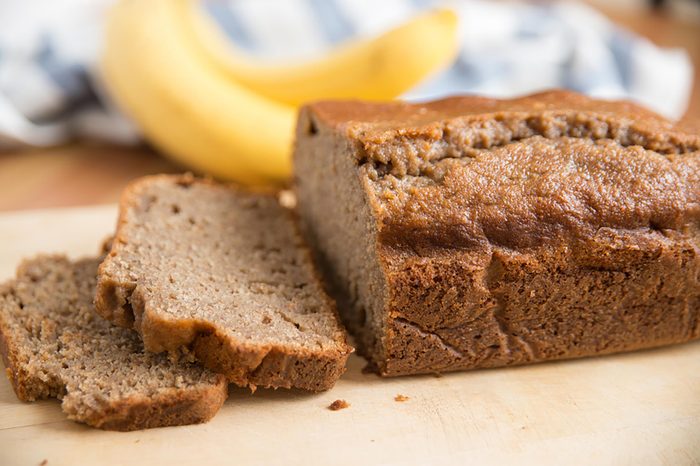
Make sweet treats better for you
When you have a moment of healthy-eating weakness, are you more likely to give in to the temptation of a salty, buttery bowl of mashed potatoes or a hunky slice of chocolate pie? If it’s the latter, Berndt relates. If you’re wondering how to get more protein and fiber into your favorite baked goods like banana bread, muffins, and breakfast cookies is to add pureed or mashed black or white beans or chickpeas. Try adding silken tofu to smoothies and puddings. No one will know your secret!
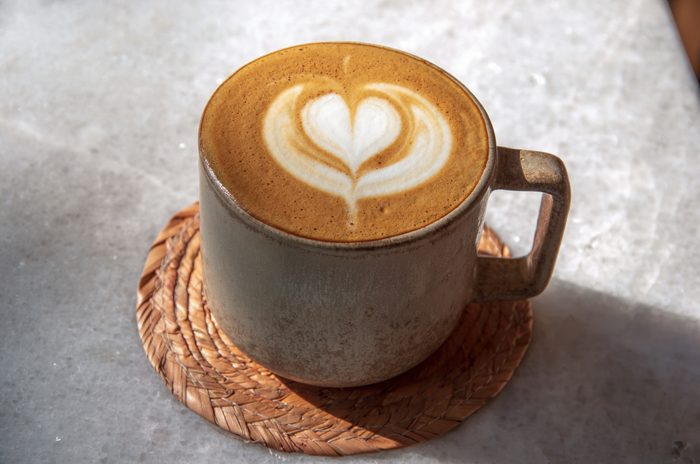
Upgrade your coffee to a latte
Around 2 p.m. on a back-to-back meeting kind of day at work, you ask your coworker to pick you up a black coffee. It might give you the java fix, but it won’t give you the protein benefit. “Cow’s milk is the go-to here,” explains nutritionist Keith Ayoob. “Soy is fine if you’re allergic to cow’s milk or intolerant, but the others just don’t have the protein or nutrition that good old milk delivers.” If dairy is not your thing, just check the nutrition label. Some plant-based milks are better than others in terms of protein content and many are fortified with nutrients too. You could also add a scoop of your favorite protein powder to make protein coffee. For reference, one cup of cow’s milk has nearly 8 grams of protein.
I Had Mushroom Coffee Every Day for a Week—Here’s What Happened
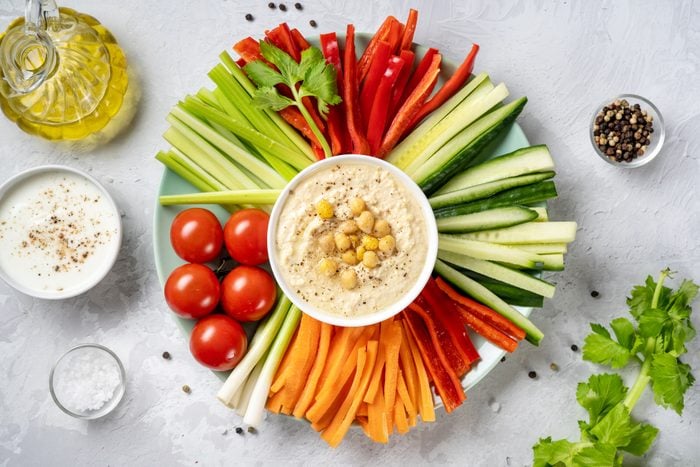
Dip into hummus
Slide over avocado and tortilla chips, and say hello to hummus with carrot sticks. “Hummus is chickpeas blended with tahini usually, so the protein quality is a bit better with that combo,” Dr. Ayoob says. “It makes an awesome high-protein dip for veggies.”
Keep red lentils handy
Grace Wong, RD, has a favorite protein player: red lentils! “I always keep some red lentils in my pantry to throw into soups, stews, and curries for extra protein and fiber,” she says. “It takes 15 to 25 minutes to cook them, and they go well with almost every soup recipe I have.”
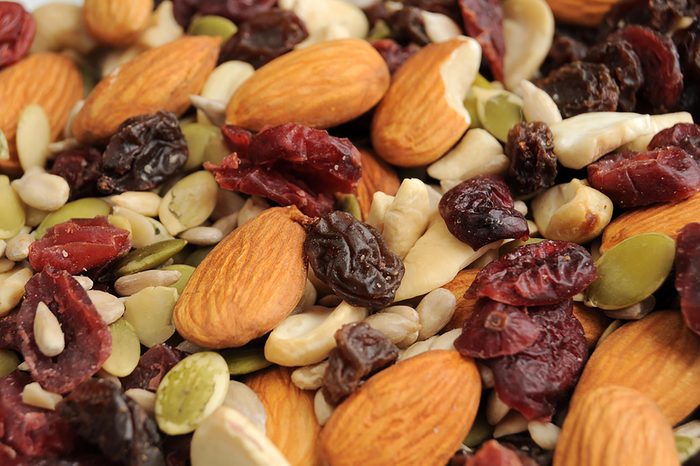
Make DIY trail mix
Instead of purchasing a packaged snack pack that likely has tons of additives (looking at you, sneaky sugar!), Wong says to take on the DIY project. “Get your own favorite mix of nuts, seeds, and all the fun fixings. I like walnuts, almonds, dark chocolate chips, and craisins,” she says. Or skip the craisins and add unsweetened coconut flakes instead. Nuts provide your daily dose of healthy fats, in addition to protein, and are filling and delicious to boot. (Just watch portions, as the calories add up quickly.)
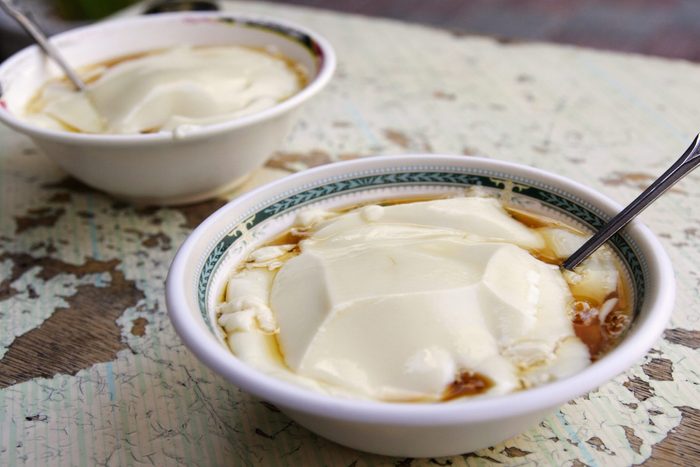
Whip up a tofu dessert
Before you turn up your nose at tofu, keep this in mind, straight from Wong (who is a big fan!): “Dessert tofus are usually individual packed and come in many flavors—the brand Sunrise has banana, peach mango, coconut and almond.” Bring them along as a side with your lunch or have it as a snack. For dessert, top with warm fruit and a drizzle of chocolate syrup or sugar-free monkfruit syrup (it tastes just like maple!). A small individual pack (150g) has as much protein as an egg!
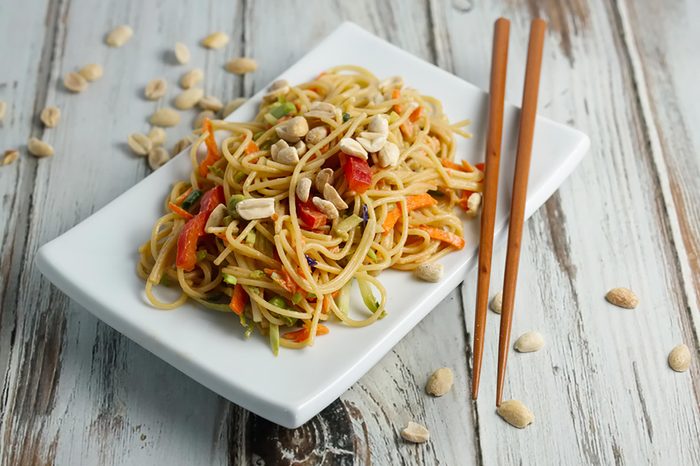
Use nut butters in cooking
Give olive oil a rest and welcome peanut butter into your meal prep. “I love using natural peanut butter in cooking,” Wong says. “My favorite peanut butter recipes are Thai noodle salad (toss peanut butter with soy sauce, rice vinegar, and cilantro for dressing) and vegetarian squash soup with pineapple and peanut butter.”
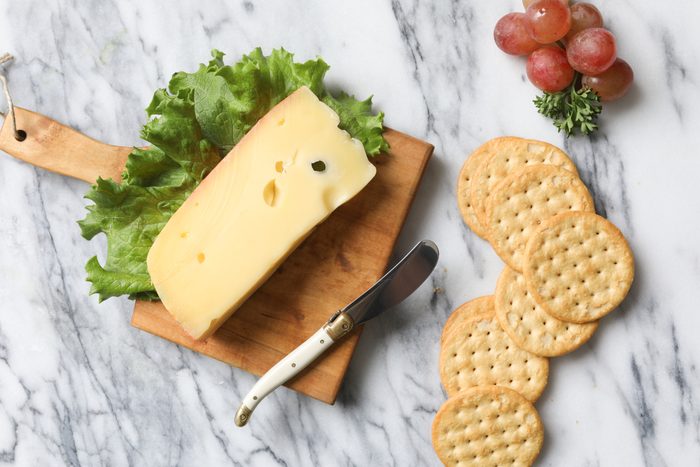
Top crackers with nut butters or cheese
You have Wong’s permission to eat cheese and crackers to fill you up—just remember to make sure your meals are balanced throughout the day, so you don’t overdo it on calorie intake. If cheese upsets your tummy, go for peanut butter and crackers, as a way to make sure you’re fulfilled when there are still hours to go until dinner time.
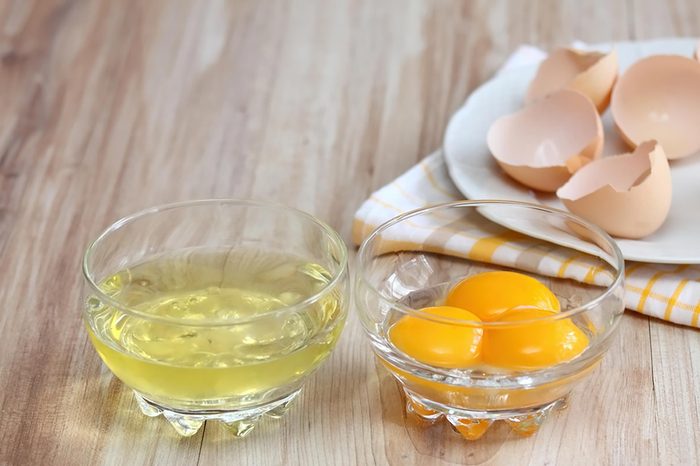
Stir in egg whites
Egg whites are packed with protein to keep you full and satisfied, and because they’re nearly tasteless, you can add them into a variety of recipes. Kaleigh McMordie, RD, a Lubbock, Texas, nutritionist, recommends separating out a single egg white to stir into your oatmeal in the morning. That will keep you from burning through the carbs of the oatmeal quickly and looking for snacks before lunch. If you’re cooking oatmeal on the stove, add one whisked egg white to the bowl once the oatmeal is slightly cooled, or if you’re making it in the microwave, stir in the whisked egg at the same time as the milk or water, pre-cooking. To reduce the risk of getting sick from salmonella bacteria, which can contaminate eggs, make sure to cook the egg whites thoroughly or use a pasteurized egg white product.
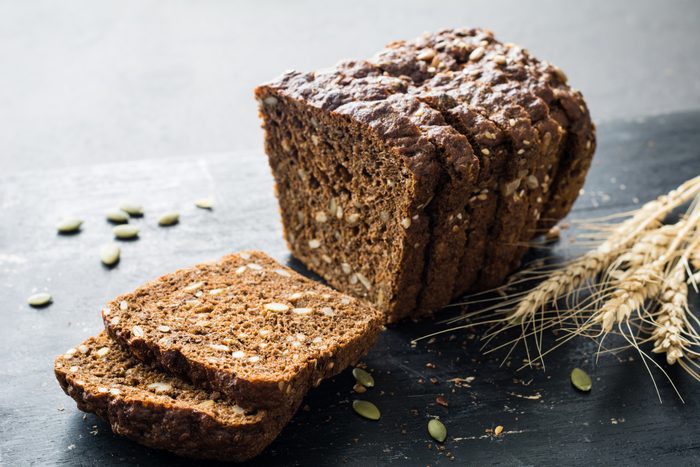
Eat more whole grains
When faced with multigrain, basic white, or whole-wheat options, McMordie says the choice is easy when considering how to get more protein: whole grain, all the way. “For the same serving size, whole-grain products like bread, flour, or pasta, typically have more protein than their refined counterparts,” she explains. They also tend to have more vitamins and minerals as well as fiber. Look for “whole grain” to be first in the ingredient list.
This Is the Real Difference Between Whole Wheat and Whole Grain
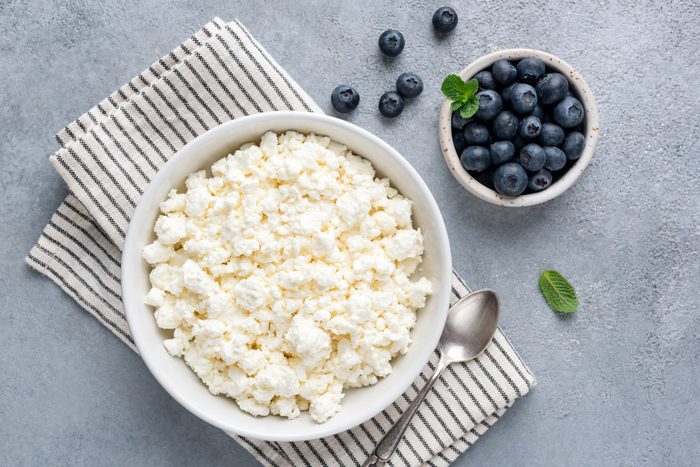
Rediscover cottage cheese
You might think cantaloupe with cottage cheese is only for dieters at diners (it’s frequently on the “light bites” menu), but nutritionist and author, Jill Weisenberger, RD, says it’s a great idea to eat some spoonfuls as the sun rises. “At breakfast, I eat a double serving of low-fat cottage cheese to get in ample protein to start my day,” she says. “Instead of a mere half-cup, I fill up on a full cup of cottage cheese.” One cup delivers 25 grams of protein.
I Ate Cottage Cheese Every Day for a Week—Here’s What Happened
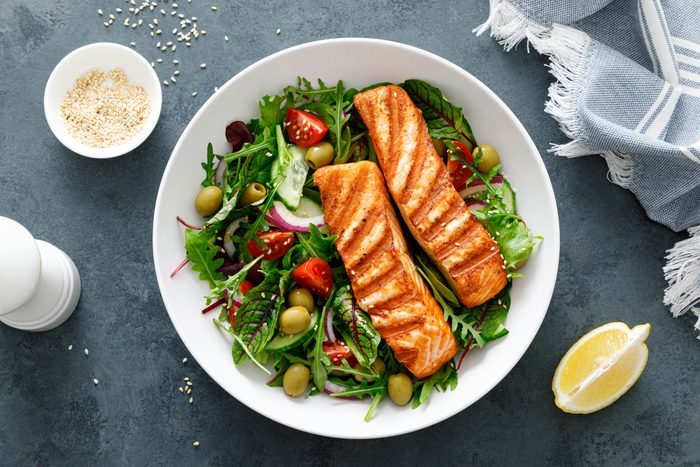
Double up on fish
Especially if you’re strapped for time or tend to only cook once in a blue moon, making larger portions is the way to go. For Weisenberger, preparing healthy fish in bulk makes it easy to make high-protein choices for several days. Four ounces of salmon has 23 grams of protein, according to the USDA.
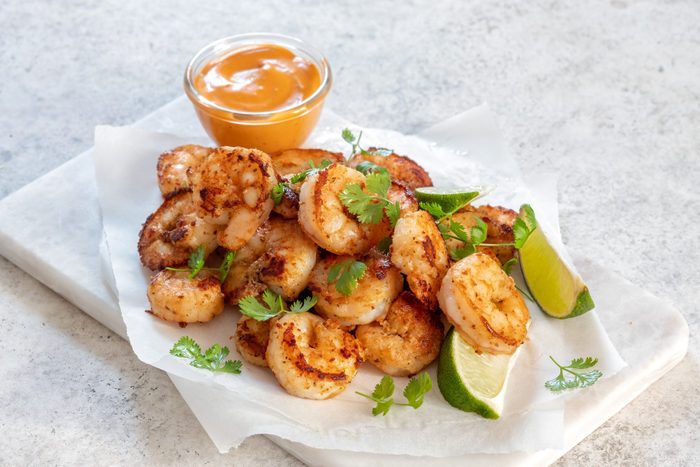
Try a fish side
Unless you’re a true carnivore, scarfing down a mountain of meat might not sound so inviting. Amanda Dale, a certified personal trainer and nutritionist, has an idea: “Reducing the meat portion and adding a fish ‘side’—think shrimp, scallops, salmon, or halibut—dresses up a meal and gives your palate a sense of variety and satiety in addition to a protein boost.” Four ounces of shrimp deliver 20 grams of protein, per the USDA.
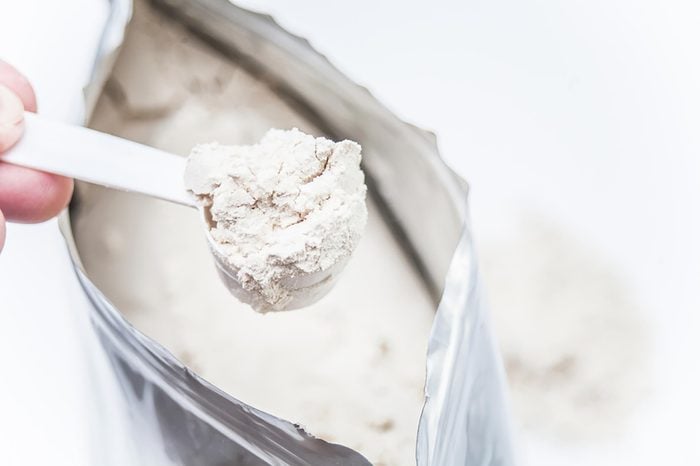
Always keep protein powder handy
Just like you keep some deodorant for the sweaty days, hair-ties for when you just *can’t* with your hair, and lipstick for an impromptu happy hour, Dale suggests keeping another must-have item at hand: protein powder. “I always keep a mini Ziploc of high-protein, zero-carb powder in my purse to make sure I’m never hurting for my post-workout recovery—or a healthier snack choice at work,” she says.
Here’s Why Taking Too Much Protein Powder Can Be Seriously Dangerous
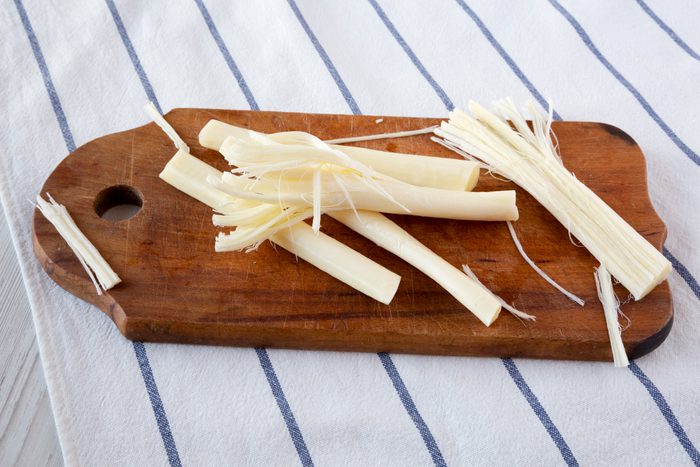
Try string cheese
…or steal some from your kid. Because of its ingredients, part-skim mozzarella cheese sticks are a simple protein-packed addition to any snack, according to nutritionist Kathryn Cottell, RD. They’re also super easy to take on the go.
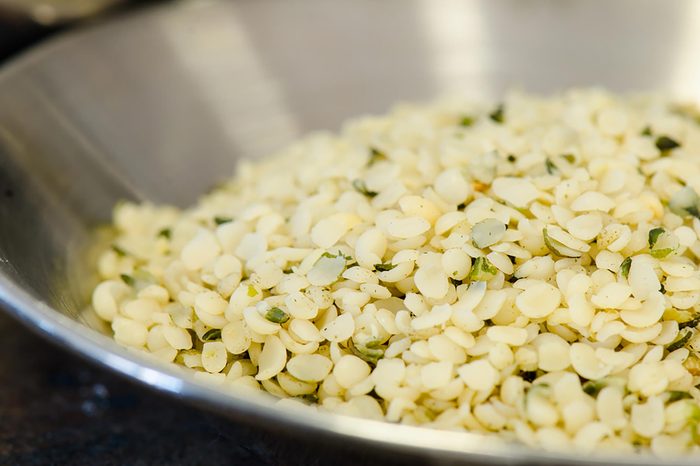
Use hemp hearts
Problem: You want to eat more protein but you don’t want to necessarily change what you’re eating, because you’re a picky eater to begin with. “Hemp hearts are my go-to protein source when I don’t want to change the flavor profile but still increase the protein content,” says Tara Coleman, a clinical nutritionist. “They are great to mix in oatmeal or sprinkle on salads.”
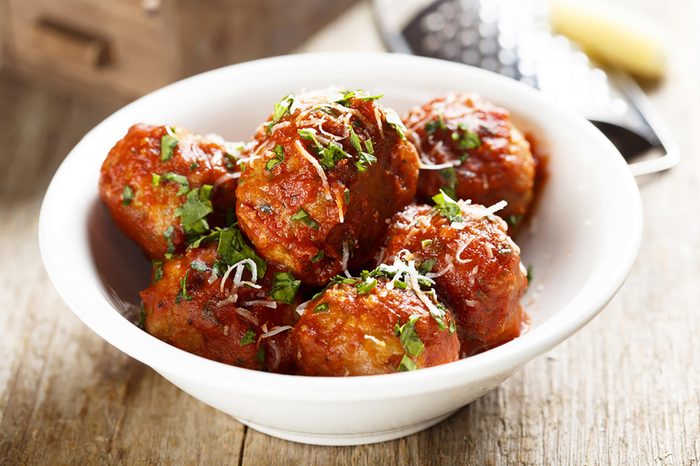
Make meatballs
On top of spaghetti, all covered with cheese? Nah—skip the noodles and the parmesan, but double up on the tomato sauce and turkey meatballs advises celebrity nutritionist Lisa De Fazio, RD. You’ll still satisfy your craving for Italian, you’ll rack up the lean protein, and you’ll keep the refined carbs and saturated fat to a minimum.
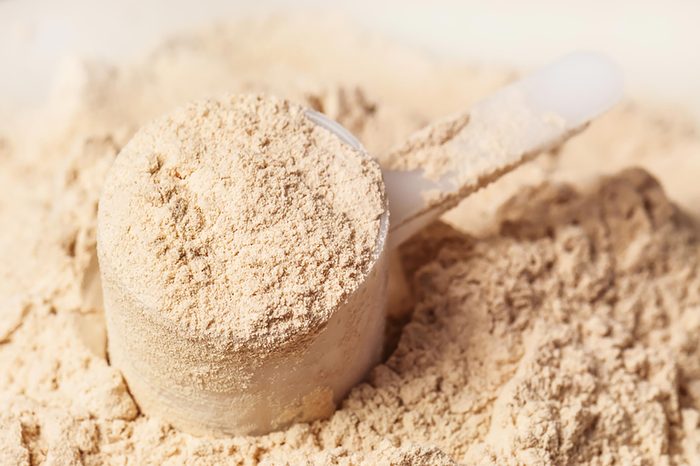
Try savory protein powder
“You can add protein powder to more things than just smoothies!” health coach Michelle Gindi says. “I’ve had great success adding protein powder to my morning pancakes and some granola bars, which is a sneaky and delicious way to get in more protein! I’ve even stirred some protein powder into vegetable soup for an all-in-one meal.”
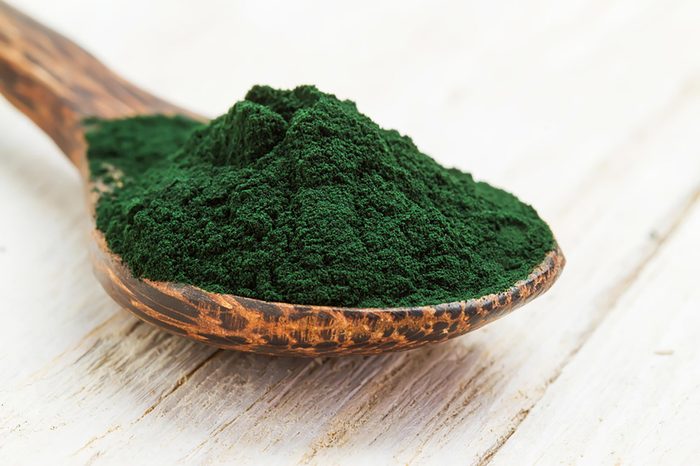
Add spirulina to your smoothies
One simple way for how to get more protein is to make it a topping. Nutritionist Ashvini Mashru, RD, recommends spirulina, the superfood you’ve never heard of. “This natural algae is one of the most potent protein sources available, with nearly 16 grams per ounce. Not to mention it’s a great source of antioxidants, B vitamins, iron, calcium, and other nutrients. Add it to your fruit smoothies or protein shakes!”
What You Should Know About Spirulina Benefits, Nutrition, and More
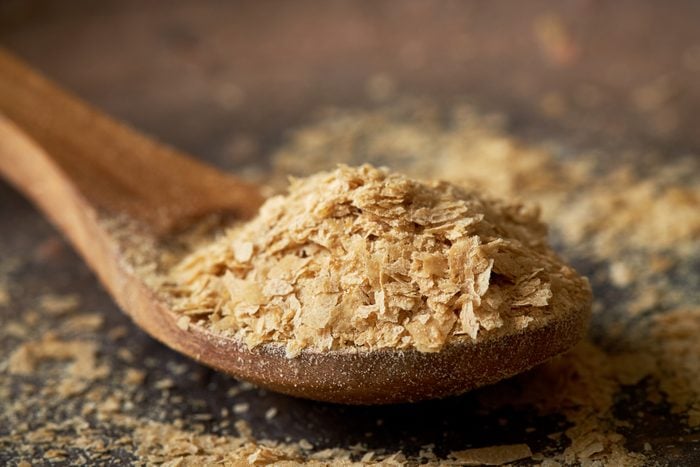
Sprinkle on nutritional yeast
Nutritional yeast is the best-kept secret of the vegetarian and vegan community. One-and-a-half tablespoon of this flaky seasoning contains 8 grams of protein, “Nutritional yeast has a cheesy flavor and can be used to season anything from scrambled eggs to salad to pesto,” says Mashru. It’s also an amazing source of B vitamins, doubling as a perfect vegan alternative for cheese.

